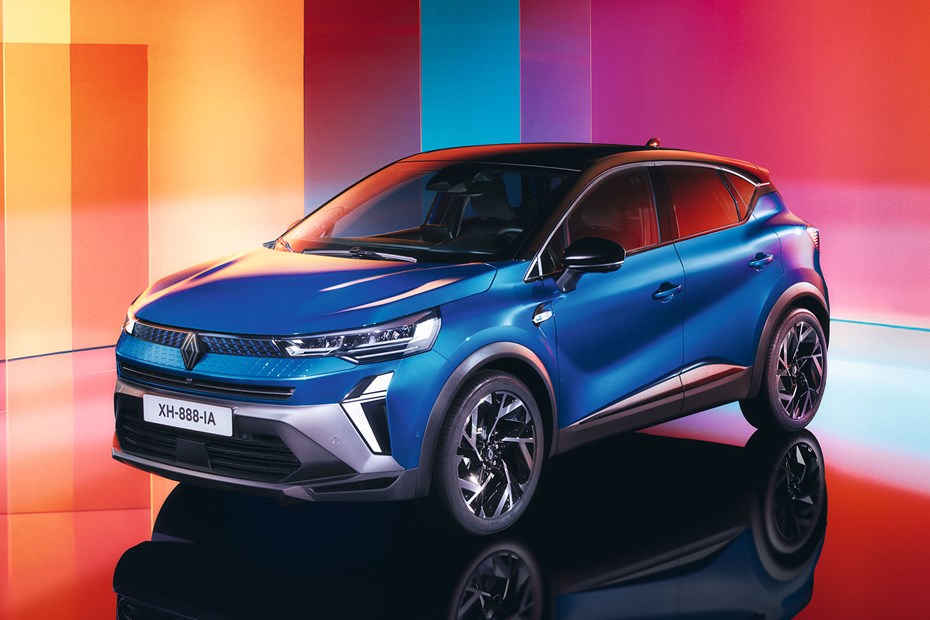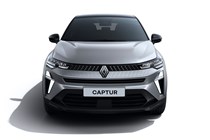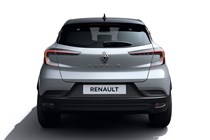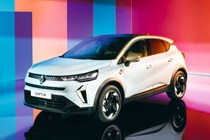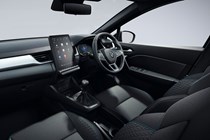The Renault Captur has received its mid-life facelift. The revised car will hit UK showrooms this autumn, where it’ll offer renewed competition for newer B-segment SUV rivals such as the Fiat 600e, Jeep Avenger and the recently revised Ford Puma.
Renault is obviously keen to get back amongst the compact SUV tussle, as proved by its extensive suite of updates for the Captur. Tweaks include fresh front-end styling, revised interior trim and a larger infotainment system with built-in support for Google apps.
Prices are yet to be confirmed, but we’ll update you with that information as soon as it’s available. For now, scroll down to learn everything about the facelifted Captur’s specs.
What’s changed over the old Renault Captur?
We’ll start with the obvious stuff – the styling. Renault has dragged the Captur’s design into step with the rest of its line-up, with a heavily reworked front end that apes the design of the updated Clio supermini and the Megane E-Tech EV.
The embossed grille, one-piece badge and vertical air inlets in the front bumper are now all part of Renault’s brand identity, so they’re all on the new Captur. Renault has also fitted a set of slimmer headlights – and they’re powered by LEDs as standard.
At the rear, Renault has sparked a bold return to the styling conventions of the early 2000s by fitting the Captur with a set of clear-lensed taillights. Buyers also get a reshaped rear valance and the same one-piece badge found on the radiator grille.
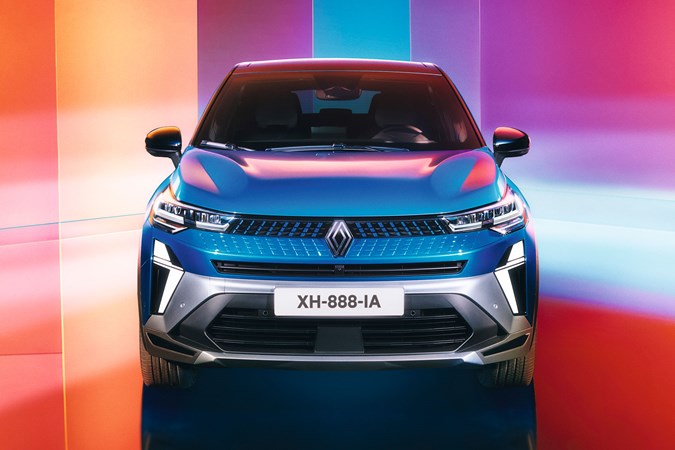
Inside, the biggest change is the new 10.4-inch portrait-oriented infotainment system. It’s bigger than the 9.0-inch screen offered in the Clio, reflecting Renault ambitions to push the Captur further upmarket – and it comes with built-in Google functionality.
What does that mean for you? Well, for starters, you can use Google Maps without needing to pair your phone to the dashboard. However, Renault has took things a step further and struck up partnerships with the likes of Waze, Amazon Music, Vivaldi and Radioplayer to provide native support for those applications, too.
Other tweaks include fresh interior upholstery, a smattering of USB-C outlets and a new 48-colour ambient lighting system that automatically updates everything 30 minutes to compliment the driver’s circadian rhythm. It displays cool colours during the day and warm colours at night, which Renault says creates a more relaxing mood in the cabin.
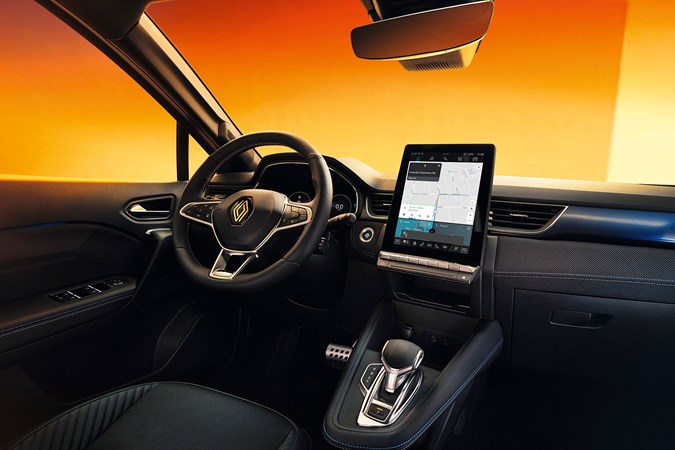
The last (and, admittedly, most unusual) update is a new welcome soundscape that plays as you step into the Captur. It was created by the French composer and artist, Jean-Michel Jarre. Renault is particularly proud of the fact that it’s an ‘actual tune’ rather a Dolby-esque ambient noise found in its competitors.
What models and trims are available?
Renault will sell the Captur in three specifications called Evolution, Techno and Esprit Alpine. Evolution variants feature 17-inch alloy wheels, LED headlights, two USB-C ports up front, a wireless smartphone charger and matte black body mouldings.
Above that, there’s the Techno model. Upgrades include 18-inch alloy wheels, two more USB-C ports for rear-seat passengers and gloss black body trims. This version will also be the entry-point for Renault’s new Google-enabled 10.9-inch infotainment system.
The range-topping Captur Esprit Alpine will follow the template set by the Clio, sporting 19-inch alloy wheels, black badging, gloss black window surrounds and a unique front splitter. Inside, it’ll also feature model-specific upholstery with blue stitching.

In addition, Renault plans to offer the Captur with a broad range of optional exterior accessories. These include sidesteps, towbars, illuminated door sills and – get this – underbody lighting. The early 2000s really are on their way back into fashion.
It’s also worth mentioning that Renault has ditched leather and chrome trim for the Captur as part of its latest sustainability drive. The firm plans to completely phase out animal-derived materials in its cars by 2025 – so the Esprit Alpine trim features 26% recycled fabrics in its upholstery.
Obviously, the revised Captur will be fitted with more safety tech than you can shake a high-visibility vest at. It’s the world we live in, now that GSR2 has exerted its grip on the car industry. Standard kit will include automatic emergency braking, lane keeping assist, adaptive cruise control and a speed limiter.
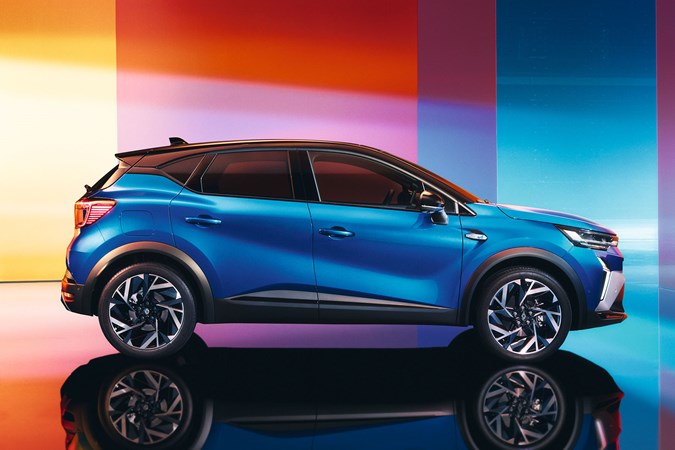
Happily, Renault has recognised that not every driver gels with every piece of driver assistance technology. It’s fitted the updated Captur with a new hot key that allows you set and load your preferences at the touch of a single button. The same button is fitted to the updated version of the Dacia Sandero.
What engines are available?
Renault has streamlined the Captur’s engine range as part of the update. The cheapest option is a 1.0-litre three-cylinder petrol unit with 90hp and 160Nm of torque. It’s paired with a six-speed manual gearbox and covers the 0–62mph sprint in a rather pedestrian 14 seconds. If it’s as efficient as it was in the old car, though, it should return 40mpg.
Above that, there’s Renault’s 1.6-litre four-cylinder self-charging petrol hybrid system. It produces a far sprightlier 145hp and 250Nm of torque, which is enough to slash the Captur’s 0–62mph time down to 10 seconds. Plus, Renault says it can return between 57.6 and 60.1mpg on the WLTP combined cycle.
Luke Wilkinson is Deputy Editor of Parkers. He has five years of experience as a car journalist and spends his time writing news, reviews, features and advice pieces for both Parkers and its sister site CAR magazine.



